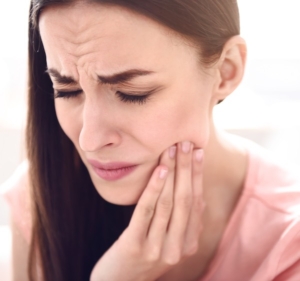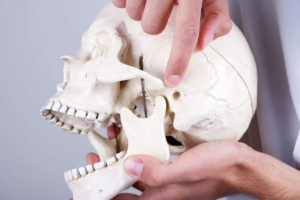New evidence-based techniques to get lasting results for patients suffering from TMJ Pain
With the exception of toothache, TMDs (Temporomandibular disorders) are the most common pain presentation dentists, orthodontists, and oral therapists will see. Yet despite the prevalence of this condition, patients consistently find that the professionals who are suppose to help them are only able to provide limited solutions and uncertain advice. (1)
What do you mean 'limited solutions'?
When I say limited solutions, I am saying most interventions do not provide lasting relief.
Botox - On rare occasions botox provides a lasting outcome, but typically needs to be administered every 3-6 months. The problem with this approach is that using a toxin to paralyse a muscle may alleviate pain but quickly leads to muscle atrophy, compromising orofacial function and ultimately weakening the orofacial structures needed to overcome the condition in a lasting way. (2)
Splints - In a similar way, a splint will modify occlusion and inhibit muscle load providing some relief, yet once again the large body of systematic reviews and meta-analysis is resoundingly clear that the effect of splint therapy for the majority of sufferers is temporary. (3)
Likewise, interventions such as physical therapy, pharmaceutical medication and low-level laser are often provided as regular band-aid rather than a lasting solution.
What do you mean 'uncertain advice'?
Many of us as professionals will give TMD sufferers advice, yet those that are really honest with ourselves give advice with a healthy dose of uncertainty. Why? Because we know, or have been told, that temporomandibular disorders are highly complex. It is true that TMDs are multifactorial, which can make diagnosis and assessment seem overwhelming but I am convinced that many professionals feel uncertain about TMD treatment simply because so many patients have spent so much time, effort and thousands of dollars looking for relief.
As such, our uncertainty leads us to referral - as it should - but even this rarely leads to lasting solutions. Patients are typically referred from doctor to dentist to specialist only to be prescribed dated treatment options or even surgical interventions, when the correct conservative education and treatment may have worked well.
Clinically, based on the percentage of lasting outcomes with chronic TMD patients who have been referred from maxillofacial surgeons and neurologists that me and my colleagues witness on a regular basis, we can tell you that the majority of TMD sufferers can find lasting results with simple conservative interventions.
But ... the most important step is the first step. The correct diagnosis.
What are 'the right questions'?
You may not be aware, but there is a revolution happening in the world of pain science. Whether we're talking about chronic pain due to injury, arthritis or ergonomics the evidence-based research has demonstrated conclusively and consistently that chronic pain and mechanical asymmetry or degeneration are not causatively related. This has been demonstrated now in mountains of research and is most simply summarised through publications from the NOI group. (4)
In order to start asking the right questions, you need to know that TMDs are no exception. To put it simply, muscle asymmetry, poor occlusion and even disc displacements are NOT the 'cause' of your patients' ongoing pain.
The questions you need to be asking in order to direct your patient to the fastest possible solution do not pertain to mechanical factors but to functional factors.
Historically our interventions have centred around mechanical factors - resolving asymmetry, restoring muscle balance and even surgically modifying temporomandibular joints or occlusal surfaces. But those days are gone. If we are to follow evidence-based practice our solutions must be functional rather than mechanical. And the good news is, functional interventions work in a lasting way.
What are the right interventions?
Firstly, we must prescribe interventions that empower the patient with strategies that will strengthen the affected area, rather than interventions that will act as a crutch or compensation for the pain. Early research has shown myofunctional exercises to be effective (5), and we prescribe them often.
Secondly, skilled manual soft tissue therapy will compliment the myofunctional exercises and speed up improvement considerably. We can teach you a 5-minute hands-on soft tissue assessment that is a powerful adjunct that every dentist and OHT should know.
Thirdly, interventions must empower the patient with education pertaining to the multiple contributing factors such as sleep, posture, airway and parafunctional habits. It is THESE that perpetuate your patients' pain, not asymmetry or joint dysfunction.
Now I know multiple contributing factors can make TMDs sound complicated, and it can feel daunting knowing where to start, but assessment and treatment do not have to be complex. Start with the assessment PDF attached.
Begin to ask your patients if they have head, jaw or face pain. (Often they won't mention it, unless you ask). If they do, get them to fill out the PDF. This form will ensure that you are integrating all of the factors that may be contributing to your patient's pain, and enable you to flag the areas that your patient may need to address first, to start gaining relief.
Long term solutions are entirely possible for the majority of TMD sufferers with a functional therapy approach. We see it clinically every day...
Case Study: 50 year old female with a history of daily headaches since childhood and more recently nocturnal migraines and jaw stifness on waking.
History
This patient has experienced headaches since her childhood. 10 years ago during a routine dental examination, her dentist commented that she was worried about the many cracks and wear on her teeth so referred her to a Prosthedontist to have a splint made.
Since then, the patient reports her headaches have worsened and she has episodes where she wakes suddenly during the night, with a ‘stabbing pain through her head’ and vomits. She has broken the said splint 3 times, and almost choked on a broken piece with one of these episodes. Her new dentist made her a different type of splint at the beginning of the year, and these nocturnal ‘migraines with vomiting’ have quadrupled in frequency. The patient was referred to a Neurologist who has cleared her of any nasty pathology and referred on to me for assessment.

Examination
During the consultation and examination, the patient reports she wakes with a stiff jaw and feels very fatigued during the day. She has a Mallampatti 4, scalloped tongue, and many cracked and eroded teeth. She reported that her husband wears earplugs to bed because she is ‘so noisy’ during sleep.
Treatment Plan
We treated her jaw stiffness with our 5 minute hands on soft tissue assessment and gave her some myofunctional therapy exercises and breathing exercises. We recommended a sleep study because, as we explained to her, if she has a sleep problem, these splints will be making her airway more obstructed.
Outcomes
Her diagnosis was SEVERE SLEEP APNOEA to be treated with CPAP. The sleep physician has also advised she remove her existing splint as it contributes to her nocturnal migraine and vomiting episodes.
Since starting CPAP, removing the splint and having several brief hands on soft tissue sessions her daily headaches and jaw stiffness have subsided. Remember, every case is different but this particular example highlights the need to flag the primary factor(s) contributing to your patients pain. The free PDF will help you to do this with confidence.
References
1. Horst, Ov et al: Prevalence of Pain in the Orofacial Regions in Patients Visiting General Dentists in the Northwest Practice-based Research Collaborative in Evidence-based Dentistry Research Network. JADA, Dec 2015, Vol.146(12), pp 874-878.
2. Jessica, P., Mikkel, S., Torsten, L., Kristian, R., Martin, B., Tine, A., . . . R, F. (2017). Injection of high dose botulinum-toxin-A leads to impaired skeletal muscle function and damage of the fibrillar and non-fibrillar structures. Scientific Reports, 7(1), 1-14.
Keenan, J. R. (2015). Unclear results for the use of botulinum toxin therapy for TMD pain. Evidence-Based Dentistry, 16(4), 122.
Download a review of Botox for TMD here.
3. Al-Moraissi, E. A., Farea, R., Qasem, K. A., Al-Wadeai, M. S., Al-Sabahi, M. E., & Al-Iryani, G. M. (2020). Effectiveness of occlusal splint therapy in the management of temporomandibular disorders: network meta-analysis of randomized controlled trials. International Journal of Oral and Maxillofacial Surgery, 49(8), 1042–1056.
Ebrahim, S., Montoya, L., Busse, J. W., Carrasco-Labra, A., Guyatt, G. H., & Medically Unexplained Syndromes Research Group (2012). The effectiveness of splint therapy in patients with temporomandibular disorders: a systematic review and meta-analysis. Journal of the American Dental Association, 143(8), 847–857.
Kuzmanovic Pficer, J., Dodic, S., Lazic, V., Trajkovic, G., Milic, N., & Milicic, B. (2017). Occlusal stabilization splint for patients with temporomandibular disorders: Meta-analysis of short and long term effects. PloS One, 12(2), e0171296.
4. Butler, D. S., & Moseley, G. L. (2003). Explain pain. Adelaide: Noigroup Publications.
5. Melis, M., Di Giosia, M., & Zawawi, K. (2019). Oral myofunctional therapy for the treatment of temporomandibular disorders: A systematic review. CRANIO®, 1-7.
de Felício, C., Melchior, M., & da Silva, M. (2010). Effects of Orofacial Myofunctional Therapy on Temporomandibular Disorders. CRANIO®, 28(4), 249-259.

